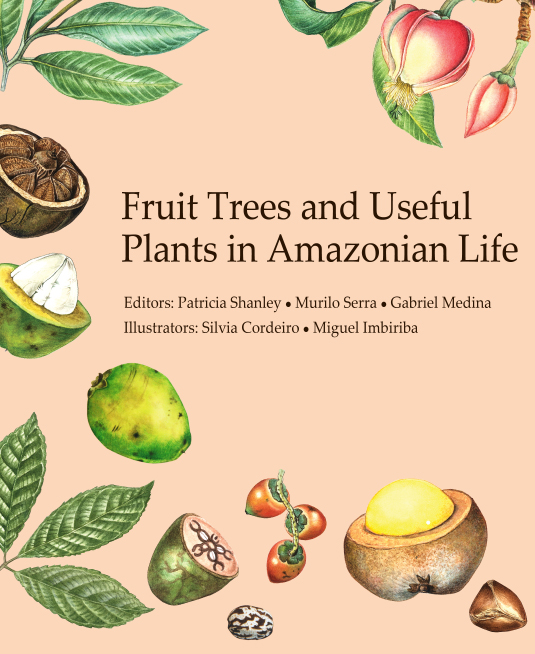Brazil
Collecting medicinal bark of Endopleura uchi in the Brazilian Amazon.
Conserving Amazonian Forests, Fruits, and Foodways
The Amazon is the largest contiguous tropical forest remaining in the world, with 25 million people living in the Brazilian Amazon alone. However, deforestation, fire and climate change threaten the region. In addition to the environmental services they provide, forests like the Amazon are also a rich nutritional storehouse. Fruits provide essential nutrients, minerals and anti-oxidants. Buriti palm fruit, for example, contains the highest known levels of vitamin A of any plant in the world. And açaí fruit is hailed as a "superfood" for its high antioxidant and omega fatty acid content. Brazil nuts are rich in a complete protein similar to the protein content of cow's milk, which is why they are known as the "meat" of the plant kingdom.
This project builds upon 25 years of work in the Eastern Amazon, including publication of Frutíferas e Plantas Úteis na Vida Amazônica (Fruit Trees and Useful Plants in Amazonian Life), produced by the Food and Agriculture Organization (FAO), the Center for International Forestry Research (CIFOR) and People and Plants (PPI). The book presents science in an innovative and accessible way, including jokes, recipes and pictures. Written by and for semi-literate rural villagers, it weaves together a tapestry of voices about the myriad values forests contain. Marina Silva, former Minister of the Environment of Brazil, who wrote the preface to the book, noted: "This book is an extraordinary poem to Amazonia".
Our work continues to raise awareness nationally and internationally about the critical importance to local groups of the wild foods of the Amazon, and helps strengthen traditional practices in the eastern Amazon. Activities are undertaken in partnership with the Rubber Tappers Union, IMAZON, CIFOR and FAO and include an educational guide for teachers to help integrate information from the book into existing curricula, posters and games, foodways videos, and workshops for educators, technicians, and community leaders.
Publications
Patricia Shanley, Irene Hohn, Murilo Serra and Hannelore Habedank. (2019) Recipes Without Words. Nutritious and Healing Plants of Amazonia.
Download the English version here and the Portuguese version here.
Patricia Shanley, Murilo Serra and Gabriel Medina (eds.) (2011). Fruit Trees and Useful Plants in Amazonian Life.
A 300-page manual that provides information on local food plants to farmers and people who need it most. Download PDF.
Download the Portuguese version here and the Spanish version here.
Patricia Shanley. (1999) To market, to market. Natural History.
Download here.
Collecting bacuri in the forest along the Capim River. (Photo: Joel Sartore)
Curumi in canoe with bacuri fruit. (Photo: Joel Sartore)
Curumi. (Photo: Joel Sartore)
Poca. (Photo: Joel Sartore)
Poca with piquia fruit. (Photo: Joel Sartore)
Kids play in a log pile. (Photo: Joel Sartore)
The team
Patricia Shanley, Maria da Gloria Rodrigues Gaia, Murilo de Serra Silva, and Fatima Cristina da Silva.
Partners
The Melza M. and Frank Theodore Barr Foundation











